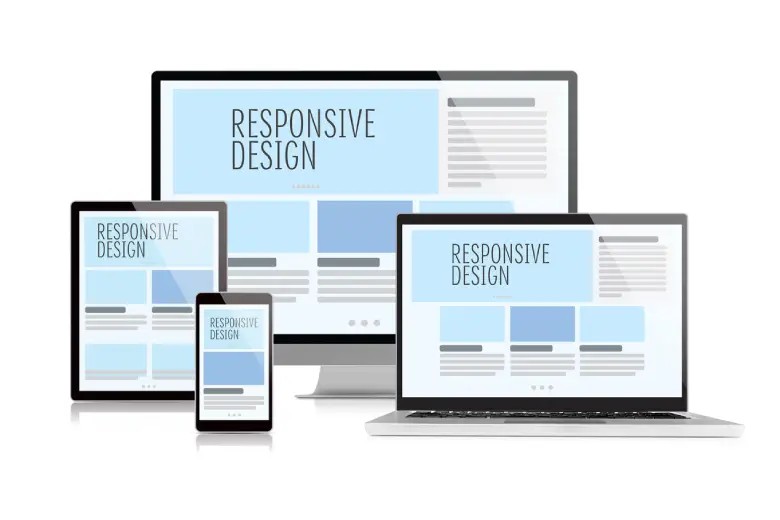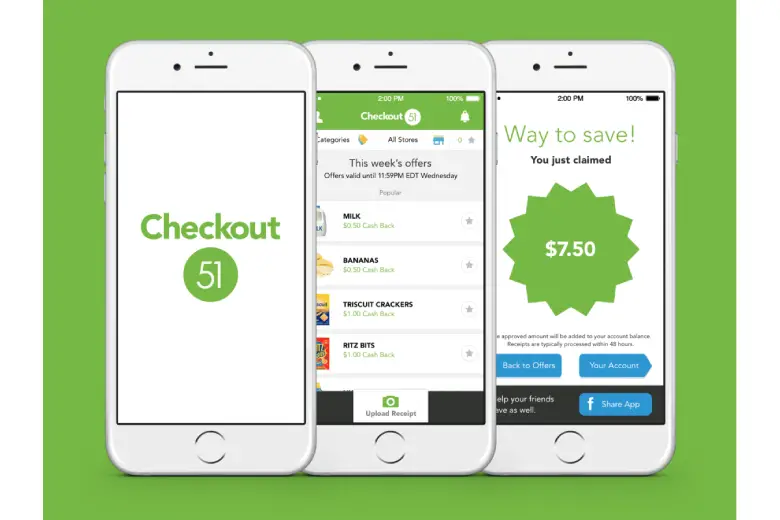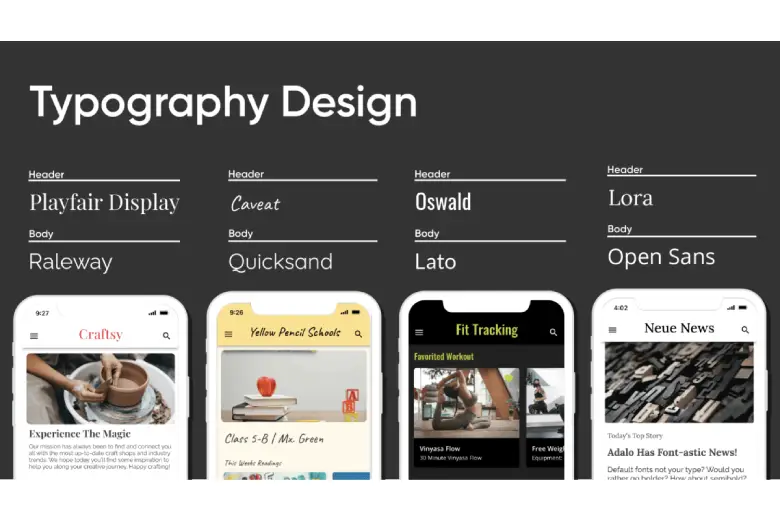Learn everything about responsive design, from its significance and principles to its benefits and applications. Also, explore best practices, examples, and how to create one effectively.
Have you tried browsing a website on your phone, only to find yourself constantly adjusting the screen because the text was too small and the layout didn’t fit? That off-putting experience is often the result of a non-responsive website. In a mobile-first world, where approximately 86% of the global population uses smartphones, responsive design solves this issue and provides an effortless user experience, no matter how someone chooses to access your website.
Websites that look displeasing on the screen do not encourage interaction. And, responsive design is often the saving grace in such situations.
In this comprehensive guide, we will explore the importance of responsive design, its defining principles, and its application within UI UX design. We’ll also walk you through the benefits, best practices, inspiring examples, and essential steps for creating a responsive design.
Contents:
- What is the meaning of responsive design?
- Why has responsive design become so important?
- Principles that define the language of responsive design
- Benefits of responsive design
- Application of responsive design within UI/UX design
- Best practices and considerations of responsive web design
- How to create a responsive web design
- Examples of responsive design
- Conclusion and next steps
What is the meaning of responsive design?

Image Courtesy: WebFX
Responsive design is a method that involves developing a website whose user interface (UI) adjusts to and changes its appearance on various devices, including tablets, smartphones, and desktops. It ensures that the website can automatically scale its layout, images, and text to fit multiple screen sizes without the need to zoom in or scroll sideways. The goal is for a website to provide an optimal viewing experience regardless of the device it is displayed on, making content easy to access and consume.
UX design is about creating the best user experiences, which includes optimizing interfaces to adapt to a visitor’s device. Responsive design accomplishes this by
using flexible grids and layouts, responsive images, and media queries (a CSS tool that allows a website to understand what kind of device it’s being displayed on), which define breakpoints for each screen size. These queries enable the website to change layout, typography, and image sizes or hide and reveal content, allowing users to browse a website comfortably within the constraints of their device. While the website’s functionality remains unchanged, its content and structure dynamically adjust to suit each screen size, orientation, and platform.
Why has responsive design become so important?
Responsive design is essential for effective search engine indexing and ranking. With Google’s mobile-first indexing, websites optimized for mobile devices receive better ranking in search results and improve online visibility. Brands prioritizing responsive design benefit from increased reach, higher engagement, and improved customer satisfaction.
A non-responsive website risks losing customers because not all users have the same device or system to access it. By adopting responsive design, brands can reach a wider audience across various platforms, building trust among users with different devices. Customers can visit a responsive website on any device and have the same experience, improving the brand’s credibility.

Principles that define the language of responsive design
The following responsive web design principles guarantee flexibility and deliver a satisfying user experience, no matter what device visitors use to access a website:
1. Accessible on multiple devices
Your website should be optimized for various devices, including smartphones, tablets, and desktops. This allows users to access your site from any device.
2. Easy to use
Make your website simple and easy to navigate. Organize features and elements clearly to avoid confusion and allow users to find what they need quickly. A clean and organized layout improves usability.
3. Consistency
Keep a consistent brand appearance across all device types for a professional look. This includes maintaining uniform design elements such as fonts and colors, whether the site is accessed via phone, tablet, or desktop.
4. Interactive experience
Encourage user interaction by incorporating features that allow users to engage with the website. For instance, on mobile devices, enable swipe gestures for menus typically located on the left side of a desktop screen. This enhances user satisfaction and trust, making the website a lot more fun to use.
Benefits of responsive design
Here are a few incredible benefits of using a responsive web design:
- Mobile-Friendly: Responsive websites are designed to adapt their layout for mobile phones and tablets, ensuring a seamless viewing experience on different devices.
- Increased Traffic: A responsive website attracts more visitors because users can access and navigate it efficiently on any device, leading to higher traffic.
- Improved SEO: Responsive websites can boost a brand’s ranking on search engine results pages (SERPs). This is due to better user experience and increased traffic, which search engines reward.
- Better User Experience: One of the main advantages of responsive design is the enhanced user experience. Visitors can easily use the website on various devices, giving the brand a positive impression.
- Lower Bounce Rate: A responsive website helps reduce bounce rates by providing an optimized experience on any device, encouraging visitors to stay longer.
Application of responsive design within UI UX design
Responsive design is a fundamental aspect of UI UX design that ensures websites and applications provide optimal user experiences on various screen sizes and viewing ports, resulting in a more efficient interaction.

Here’s a breakdown of how responsive design is applied in UI/UX:
1. Adapting to different devices
Flexible layouts – Responsive design employs fluid grids and flexible layouts that adjust to different screen sizes without manual adjustments.
Dynamic content – Content like images and text can be scaled or reordered to fit the available space, ensuring optimal readability.
Media queries – CSS media queries allow different styles and layouts to be applied depending on the device’s attributes, including screen size, resolution, and orientation.
Images – Responsive images adapt to the screen size, delivering the appropriate image resolution to optimize loading time and bandwidth usage.
2. Improving user experience (UX)
Improved accessibility – Responsive design can improve accessibility by making content easier to navigate for users with disabilities or those using assistive technologies.
Seamless navigation – Responsive navigation menus and other UI elements are designed to adapt to smaller screens, ensuring an intuitive user experience on mobile devices.
Faster loading time – By delivering optimized images and other resources, responsive design can help reduce loading times, especially on mobile phones.
3. Benefits for businesses
Cost-effective – A single responsive website can serve users on multiple devices, reducing the need for separate mobile and desktop versions, which saves development time, cost, and resources.
SEO advantages – Search engines like Google favor responsive websites, which are more user-friendly and easier to index.
Greater audience reach – Responsive design enables businesses to reach a broader audience by ensuring their websites and applications are accessible to many users and devices.
Best practices and considerations of responsive web design
With responsive design, you create flexibility for all elements—images, text, and layouts. Here are some of the best practices to follow:
1. Prioritize the smallest screens

Image Courtesy: Designveloper
A mobile-first design approach means designing for mobile devices before considering larger screens. Doing so confirms the website is optimized for smaller screens and limited resources like bandwidth and processing power. Starting with the smallest screens encourages simplicity, efficiency, and a focused UX by presenting essential content in a limited space. Once the mobile version is complete, you can expand and improve the design for larger screens.
2. Add flexibility to every aspect
Flexibility is essential in responsive web design. Every element, including layouts, images, text blocks, and components, must adapt seamlessly to different screen sizes.
3. Use scalar vector graphics (SVGs)
Consider using SVGs instead of raster graphics, particularly for icons and logos. Unlike raster images, SVGs adjust their resolution based on image paths rather than pixels, ensuring they maintain clarity at any size.
4. Modify images
Responsive images are essential for mobile-friendly design, ensuring proper sizing and cropping for optimal display on different devices. You may need to crop images on smaller screens to maintain their visual impact. For example, creating square versions of landscape images works well for mobile devices.
5. Include content-centric breakpoints
Designing a responsive website can be challenging, especially when it comes to making various types of content, such as text and multimedia, look good on every screen. To overcome this, the design should focus on content rather than the device. Set breakpoints based on where the content needs to be adjusted for optimal user experience. Content-centric breakpoints will help ensure the layout adapts smoothly across different screen sizes and effectively showcases all types of content.
6. Incorporate minimalism
A minimalist UI design enables greater consistency across various devices and screen sizes. Reducing unnecessary content minimizes clutter, making it easier for users to read and navigate. Additionally, web pages with less content load faster, offering a better user experience for visitors and boosting your SEO performance.
7. Select appropriate typography

Image Courtesy: Designveloper
Typography is crucial for readability and the aesthetics of a website. In responsive web design, it is important to choose fonts that perform well across different devices, screen sizes, and resolutions. Make it a point to select font styles and sizes that are easy to read on all screen sizes, particularly on smaller devices. Opt for fonts that scale effectively without losing sharpness or clarity, maintaining a crisp appearance despite the device or resolution.
7. Don’t hide content
There was a misconception that designers must determine which content should remain visible and what can be hidden due to limited space on smaller screens. However, this approach has changed because most people use mobile devices as their primary source of research. So, instead of hiding content for mobile users, find ways to make it user-friendly and accessible on all devices and screen sizes. For example, many e-commerce sites have size guides behind a “Size chart” tab, keeping the layout clean and uncluttered. Users can still access these guides by clicking the tab.
8. Consider larger clickable areas for buttons
Fitts’s Law suggests that larger clickable areas for buttons improve user interaction. Designers should also provide adequate whitespace between links and buttons to prevent accidental clicks, which can lead to frustration.
9. Pay attention to accessibility
A responsive website should be accessible and user-friendly for everyone, including individuals with disabilities. Ensure your design supports keyboard navigation, is compatible with screen readers, offers good color contrast, has well-organized content, prioritizes font sizes and styles, and includes accessible forms.
10. Research competitors and industry experts
A great way to stay updated on the latest responsive web design trends is by studying competitors and industry leaders. For example, if you’re designing an e-commerce website, observe how global brands like Nike, Zara, and H&M structure their online stores. These companies invest millions in research and testing best practices, so it only makes sense to benefit from their extensive R&D.
How to create a responsive web design?
Now that we have covered various aspects of responsive web design, let’s determine the steps to create one that ensures your website looks good and works well on all devices.
1. Incorporate fluid grids
Rather than relying on fixed-width layouts, opt for fluid grid systems. These systems allow your website’s layout to adapt seamlessly to different screen sizes. Fluid grids use percentages for widths, ensuring that elements resize proportionately.
2. Include flexible images
Make sure that images and other media content scale properly within their containers. Use CSS properties such as max-width:100% to make sure images adjust to the size of their container, preventing them from overflowing the layout.
3. Apply media queries
Use media queries in CSS to apply different styles for various screen sizes and orientations. Media queries enable you to adjust the layout, font sizes, colors, and other styles based on the device’s width, height, and resolution. For example, you can create a media query to increase the text size on smaller screens.
4. Prioritize touchscreens
Make sure your website is optimized for touch devices. Make buttons and interactive elements large enough for easy tapping, and position navigation elements within accessible areas. This improves mobile users’ ability to navigate your site without frustration.
5. Test responsiveness
Regularly test your website across different devices and browsers to ensure it looks and works properly everywhere. Use tools and emulators to check your site’s performance on various screen sizes and make necessary adjustments.
Examples of responsive design
Here are three globally recognized website examples that use responsive web design the right way:
1. Dropbox
Dropbox’s web page is a prime example of how responsive UX design can significantly change user behavior when used on different screen sizes. The site utilizes a fluid grid layout that automatically adjusts content to fit the screen size. Images, videos, icons, and animations scale smoothly, preventing pixelation or distortion.
Some features are hidden on smaller screens to maintain the readability and visibility of essential content. Dropbox also employs adaptive navigation, with a horizontal menu for desktops and a compact hamburger menu for mobile devices, ensuring a more user-friendly interface.
Below are the two versions:
Desktop

Image Courtesy: Dropbox
Mobile

Image Courtesy: Dropbox
2. The Washington Post
Websites with extensive multimedia content need to display it correctly for optimal readability. The Washington Post is an excellent example of a site that uses responsive design to help users easily navigate news articles and other content.
It features a hamburger menu to hide content categories and a horizontally scrolling menu to showcase trending articles on smaller screens. These straightforward strategies ensure the content is accessible and easily viewed on any screen size.
Below are the two versions:

Image Courtesy: The Washington Post
3. Airbnb
Airbnb’s responsive design allows users to effortlessly book vacation rentals or explore activities on their computer, tablet, or mobile device. Images are crucial in Airbnb’s user experience, as they effectively showcase the listings and experiences available. The responsive design ensures that images adjust smoothly to various screen sizes, maintaining their quality while being prominently displayed.
Below are the two versions:

Image Courtesy: Airbnb
Conclusion & Next Steps
We trust that our guide has helped you understand the workings of responsive design and inspired the designer in you. To sum up, whether you’re collaborating within a design team or honing your skills for personal projects, remember to prioritize a mobile-first approach over a desktop experience. You can check out this project by AND Learner, Shantanu Pathak, to get inspiration and learn more about the application of UI UX design principles in a project!
In case you think you need further assistance, here are some of our resources you can consider:
- Watch this session by Shiva Viswanathan, Design Head of Ogilvy Pennywise, and Naman Singh, Product Experience Designer at RED.
- Talk to a course advisor to discuss how you can transform your career with one of our courses.
- Pursue our UI UX Design courses – all courses are taught through live, interactive classes by industry experts, and some even offer a Job Guarantee.
- Take advantage of our scholarship and funding options to overcome any financial hurdle on the path of your career transformation.
Note: All information and/or data from external sources is believed to be accurate as of the date of publication.









